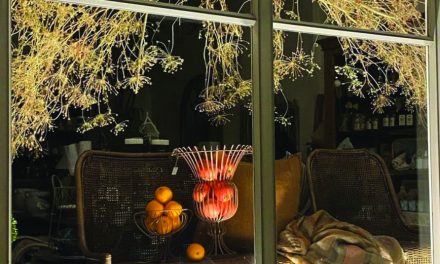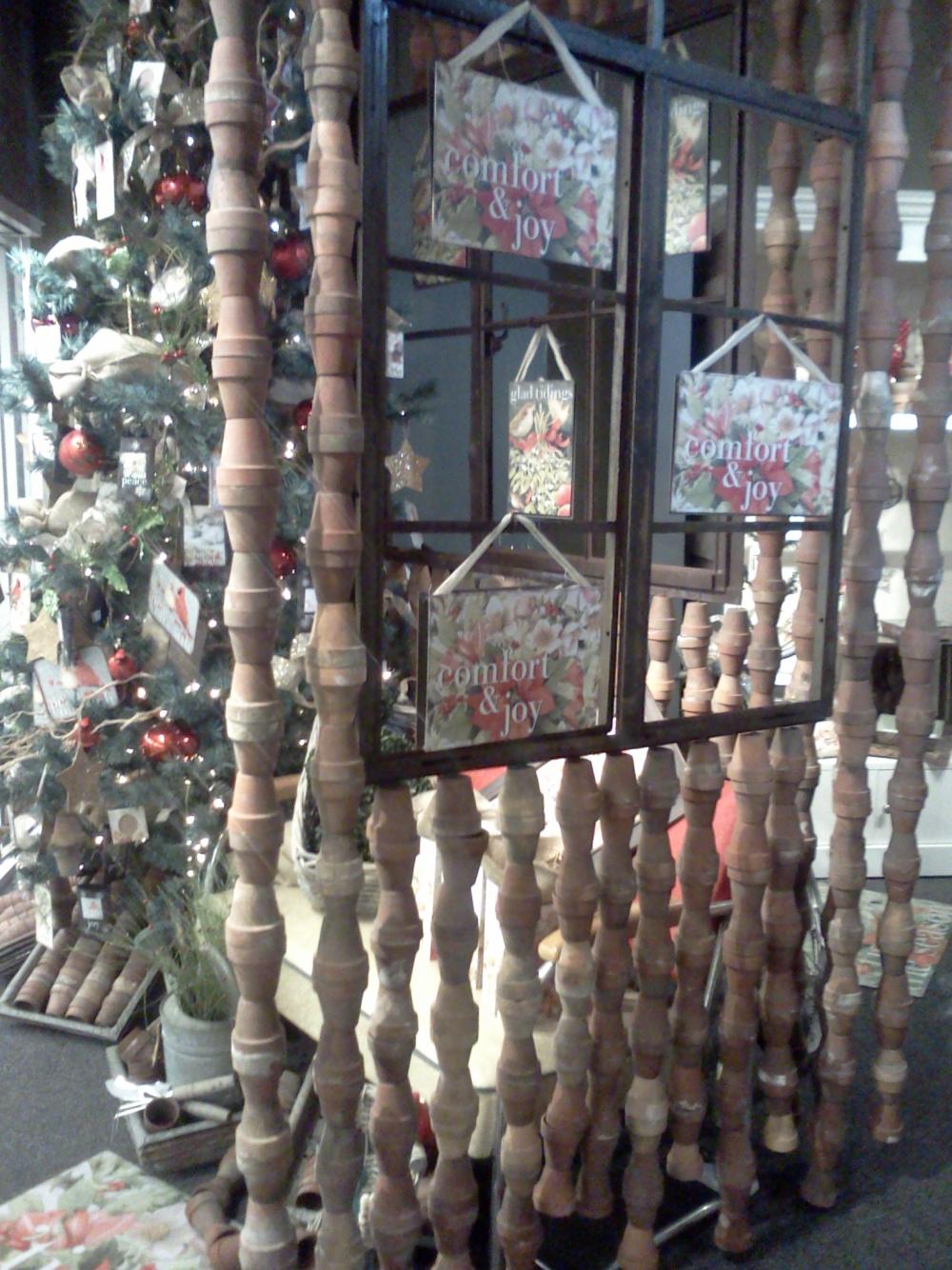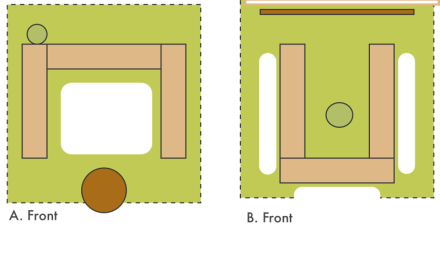How can your store stand out from the crowd? Four experts explain how to create an irresistible identity when branding a gift shop
By Stephanie Finnegan
One of the most fascinating aspects of branding a gift shop is that the “business” angle is often trumped by the personal and emotional components. A shop is a true reflection of who you are as its proprietor, owner, manager, and chief dreamer. Your vision needs to not only mirror your individual aspirations, but it has to reach out and shake hands with your customers. The folks who comprise your shoppers and browsers have to find a relatable reason to select your store as their must-see/must-visit retail destination. What can you do to assure that customers gravitate to your storefront? And, most importantly, what can you do to make sure that they want to keep coming back?
With large shopping malls, online vendors, catalogues, and ordering apps abounding, the independent retailer has to distinguish his or her business with an understandable and alluring game plan. Four retail experts spoke with Smart Retailer about the ins and outs of branding your shop from the interior to the exterior. It all comes down to knowing what your shop means to you and to your target audience.
Get Inspired When Branding a Gift Shop
“Do research online to get some inspiration. Start exploring Pinterest and Instagram hashtags, searching for key words like ‘store displays.’ This will help you get an idea of what direction you want the look of your shop to take on,” April McCrumb of Catching Fireflies explained. “Once you collect your ideas, start putting together a plan to transform your shop into something that represents you. Think about the shops that YOU like to spend time in. What draws you to them? What things could you do, then, to create a memorable environment in your space?”
While McCrumb was vacationing in Florida, she spotted a bit of yard décor that instantly inspired her: “I visited a shop that had an artsy birdhouse on a stake near their front door, and bubbles were pouring out of it! I thought it was so magical, and I put together a similar structure for our stores in Ann Arbor and Rochester. We receive so many happy comments about our ‘bubble mailbox’ from our Firefly fans. This simple addition lets our customers know our shop is going to be a happy experience before they even step inside our doors.”
Keep Customer Service a Top Priority
Getting her shop to look just right is a top priority for McCrumb, but she also said that “as pretty and as perfect as a store looks, the heartbeat of the store is customer service. If your customers feel valued and important, they will definitely want to come back to find future treasures from your shop.” Sometimes all it takes is an edible treat and a sincere message from the heart: “I stopped by a shop in Michigan that had a cute jar of small colorful cookies at the register, along with a sign that read, ‘Please take one. Cookies make everyone happy!’ Simple additions like this can create merry and memorable experiences for your customers.” These impressions go a long way toward creating a repeat customer.
Make the Heart Smile
Another one of McCrumb’s guiding principles is the importance of incorporating things that make her heart smile. Lynne Breeden, a retailer from the Shenandoah Valley, Va., takes that precept to heart as well.
“We have two gift shops, and we also have a children’s shop. In our children’s boutique, we run contests involving the kids, which require the customers to come into the shop to vote, and we have a play area with interactive toys for the kids to play with,”
Breeden stated. “Additionally, we give all children a small pack of animal crackers each and every time they visit. The kids remember this and they ask to come back. They come back . . . and so do the parents,” she said.\
“Once we have them in the store, customers are always amazed at the displays that feature antique toys mixed with today’s look in children’s clothing,” Breeden pointed out. “We have tied the branding of mixing the old and the new into our children’s store so people recognize that this is the sister store to LTD 7. Our walls are clean white and we have LED lighting to make the colors in the clothing pop, creating a happy bright environment to shop. Again, we are stressing ‘our happy place is your happy place.’ People live at such a stressful pace, and we want them to come in, slow down, and enjoy some happy!”
Pamela Mattei, a creative consultant and business strategist, seconds this “courting strategy” of children and of husbands, too. “Consider creating a husbands and kids nook. I recently went to a local quilt shop, and when you walked in, off to the side, there was a 6-foot by 10-foot room with a couch, a TV, and some video and board games to keep their ideal client’s entourage entertained,” Mattei shares. “While you may give up a little real estate space from having ‘sellable’ items, the money that having that space will generate could pay for itself over and over again, now that the real shopper in the family does not have to deal with an eye roll from the husband every five minutes or the constant nagging of ‘When can we leave?’ from a little one. In fact, the entourage might want the shopper to shop a bit longer so they can finish watching the end of the ball game or finish their board game!”
Make Your Store a Fun Place to Be
Furthering the connection between your store and family customers, Mattei suggests hosting or sponsoring kid-friendly competitions: “Buy a kid-height table and chairs and put some paper and crayons on it for kids to color while their parents shop. You might even consider having a monthly contest for the best coloring for a few different age groups, with a gift card to your store as a prize. You can post all of the entries each month on a ‘Wall of Fame,’ in the window, or in a special spot in your store.” If it’s in the store, of course, curious coloring participants will want to drop by to see if they’ve nabbed first place or scored any of the standings. Set the winning examples at the back of the store, making them stroll through the merchandise aisles, and, hopefully, fall under the spell of items along the way.
Mix and Match for the Accessory-Challenged Shopper
Besides being the “fun place” or the “shop where everyone can drop their worries and unwind,” Mattei affirms that your store will benefit from having “mix and match” displays. “Recently a relative went shopping for a couch for her new house. After seeing a well-designed display, she walked away with a couch, two chairs, some accent pillows, and a painting. Whether it is a living room or a wardrobe, become known as ‘the place to go to complete a look.’ Sometimes, people do not know how to combine accessories. If you take away the guesswork — pair up a scarf with a necklace and a pair of earrings — you might just sell three pieces instead of just one!” Mattei commented.
Change It Up to Keep Their Attention
“The way we have built our brand is the ever-changing merchandise and look of our store. We mix the old with the new, and our customers know if they come in two weeks later, the store might look dramatically different,” Breeden said. “In the business of gifts, vintage, and home décor, if we sell one major piece, sometimes the whole floor needs to be rearranged and flipped to make it look appealing again. People enjoy coming in frequently to see how we changed it to look totally different. Our prices are affordable and customers have learned that if they see an item and don’t buy right away, it more than likely won’t be there when they return a few days later. Our items turn quickly and so does the look of our store with our displays and merchandise. People have grown accustomed to visiting us frequently for this very reason. Some shops have not changed their looks or their floor layout since they opened their doors. Our customers, new and old, have always enjoyed seeing our store’s displays and window displays, too. They provide inspiration. As customers have put it: It’s their Pinterest board in real life.”
Make Shopping Easy and Rewarding
Linda O’Boyle of the Metro Home Style in Syracuse, N.Y., makes sure that customers have a relaxing and worthwhile experience every time they come through her door: “Everyone likes to say their store offers great customer service; make sure you and your staff are trained to actually deliver it. Make everything easy for the customer. A person shouldn’t have to work to make a purchase from your store. Be knowledgeable about the products you are selling, and create interesting displays. That is a key component. Plan an easy-to-navigate sales floor and keep customer-friendly hours. Offer a product mix chosen specifically for your ideal customer. Offer a rewards/loyalty program that provides more than a discount. Give loyalty members special perks. Branding your store ultimately becomes all about the experience of shopping at it.”
Be Unique
A kernel of advice, which will definitely reap customer loyalty, is O’Boyle’s penchant for commissioning unique and shop-specific merchandise. “It is rewarding to work with vendors to create a few products that are exclusive to your store alone. You should also seek to carry work by local artists that is not sold in other shops in town,” she explained, emphasizing that this will set a shop apart as a one-of-a-kind shopping destination. “You can also support a local charity that is important to both you and your customers. You create a promotion or host an event that is different from the events your competition is doing.” O’Boyle is certain that this will brand your business as a store that is concerned about its neighbors and community. In turn, folks will consider your shop an integral part of their hometown.
The Name Says It All
One of the essential building blocks for creating a brand is what you decide to call your business. Often the store’s name can say it all, said Mattei. “At the Gallery Janjobe, for instance, they are ‘Offering Art with Attitude.’ You need to ask yourself, ‘What will I offer?’ You need to determine what your brand and your business represent.” According to the creative consultant, the name should be tied into what you are selling and what mood you are presenting: “Do you want to be known for representing specific brands and lines of products? Do you want to have an eclectic mix of items that customers are not likely to find anywhere else? Do you want to be a vintage shop? Do you want to offer art, bath and body products, and food items all created by artists and local businesses in the region? It is up to you.”
Connect With Your Community
Once the shop has a name that spells out its purpose, the retailer can brand it further by becoming immersed in the downtown commerce scene. “Consider having community nights. Local schools, churches, and nonprofit organizations are always looking for ways to fundraise. I know several local businesses that partner with local organizations to sponsor community shopping or dining nights,” Mattei said. “During these special nights, members and supporters of the organizations are invited to shop or dine, and the business will donate 10% to 20% of the evening’s sales to the group. These events introduce new customers to your store and provide an enjoyable fundraiser for the group.” Mattei considers this a win-win situation, and it always pays to be on the winning team!










